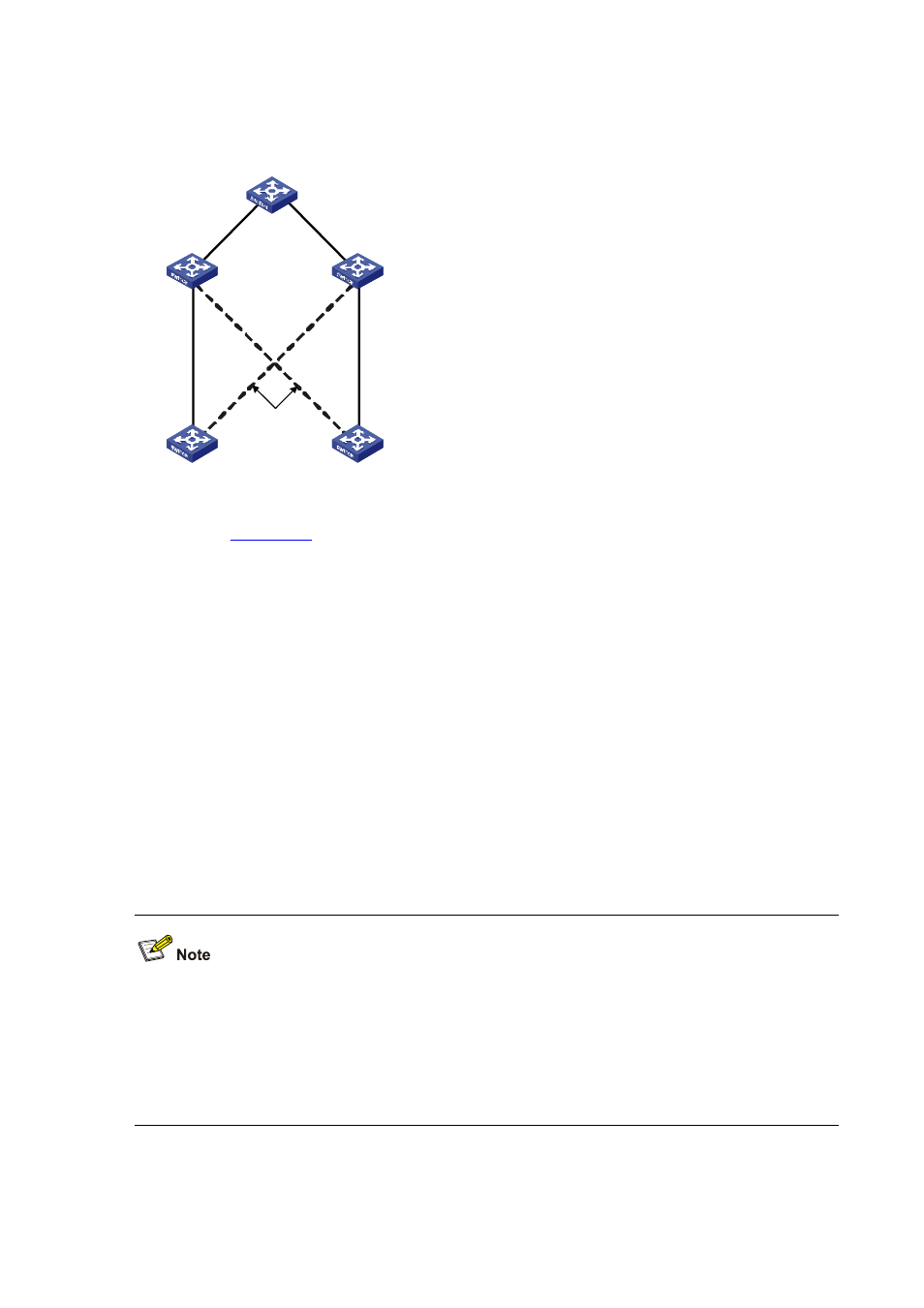Operating mechanism of smart link, Configuring smart link, Operating mechanism of smart link -3 – H3C Technologies H3C WX3000 Series Unified Switches User Manual
Page 618

60-3
Operating Mechanism of Smart Link
Figure 60-2
Network diagram of Smart Link operating mechanism
BLOCK
Switch A
Switch B
GE1/0 /1
GE1 /0/2
Switch C
Switch D
Switch E
GE1 /0/1
GE1 /0/2
GE1/0 /3
GE 1/0/1
GE 1/0/2
GE1/0/3
GE 1/0/11
GE1/0/12
As shown in
, GigabitEthernet 1/0/1 on Switch A is active and GigabitEthernet 1/0/2 on
Switch A is blocked. When the link connected to GigabitEthernet 1/0/1 fails, GigabitEthernet 1/0/1 is
blocked automatically, and the state of GigabitEthernet 1/0/2 turns to active state.
z
When link switching occurs in the Smart Link group, MAC forwarding entries and ARP entries of
each device in the network may be out of date. In order to guarantee correct packet transmission,
you must enable the Smart Link device to send flush messages to notify the other devices in the
network to refresh their own MAC forwarding entries and ARP entries. In this case, all the uplink
devices must be capable of identifying flush messages from the Smart Link group and refreshing
MAC forwarding entries and ARP entries.
z
On a Smart Link–enabled device, if a port is blocked due to link failure, the port remains blocked
after the link recovers from the failure, and does not preempt the traffic resource. Therefore, the
traffic stays stable. The port does not come into the forwarding state until the next link switching.
Configuring Smart Link
Before configuring a member port of a Smart Link group, you must:
z
Disable the port to avoid loops, thus preventing broadcast storm.
z
Disable STP on the port.
After completing the configuration, you need to enable the Ethernet ports disabled before configuring
the Smart Link group.